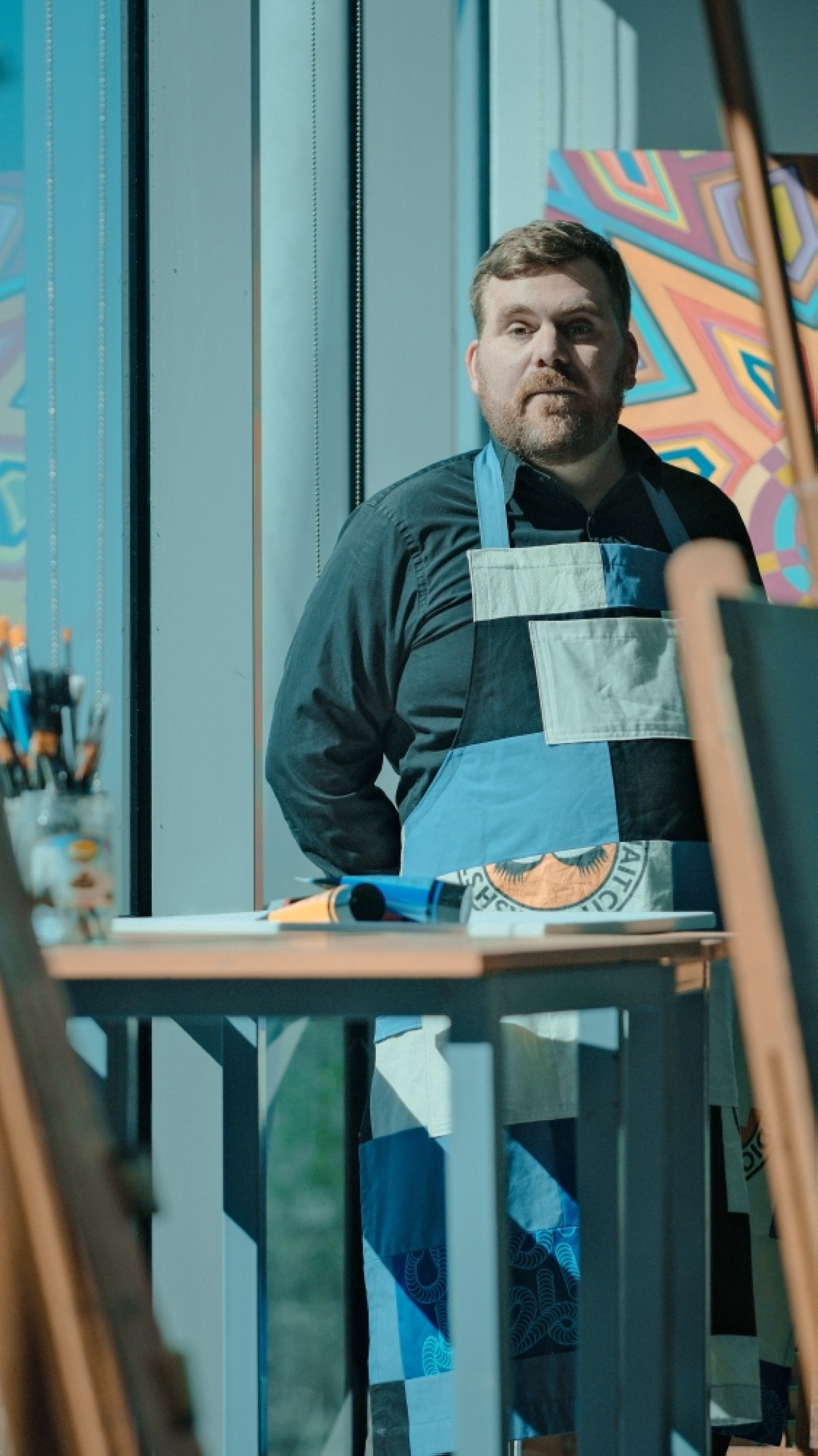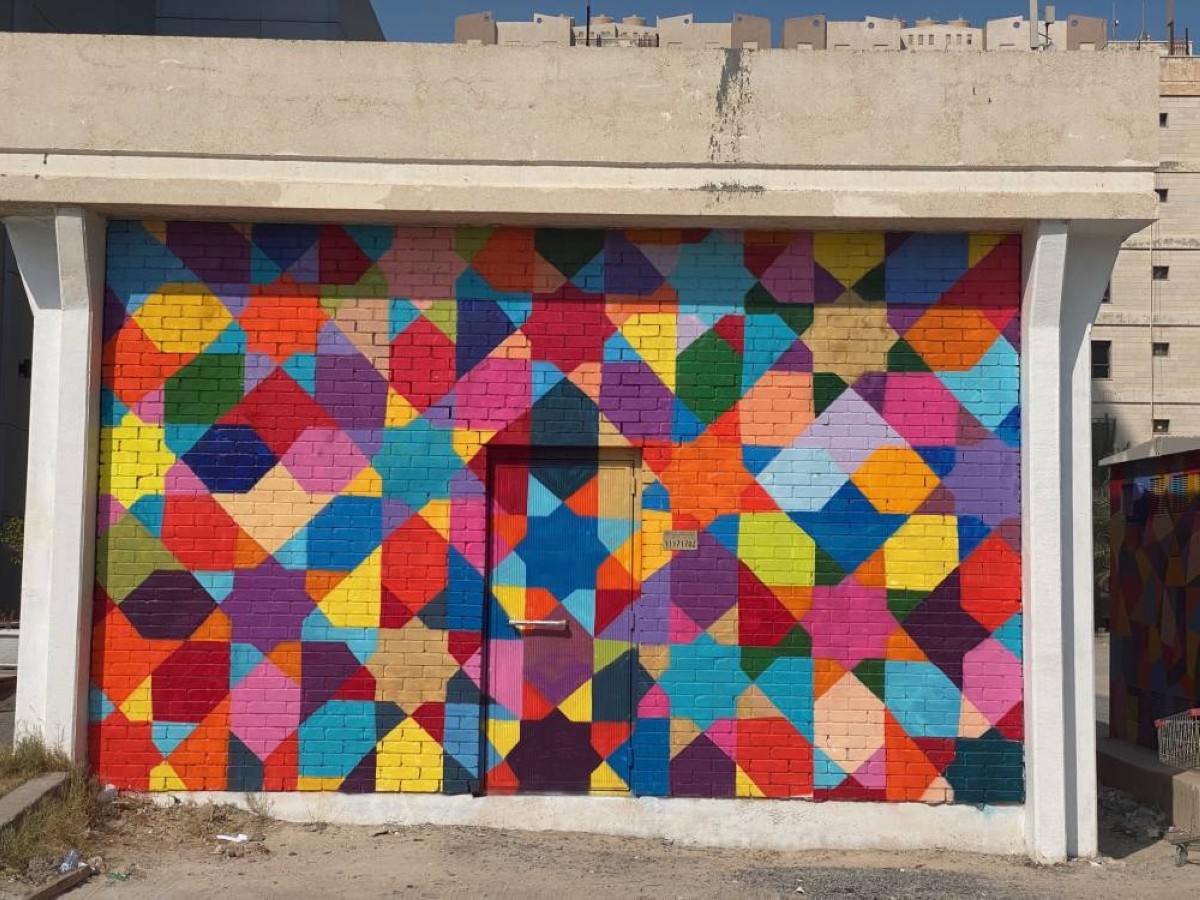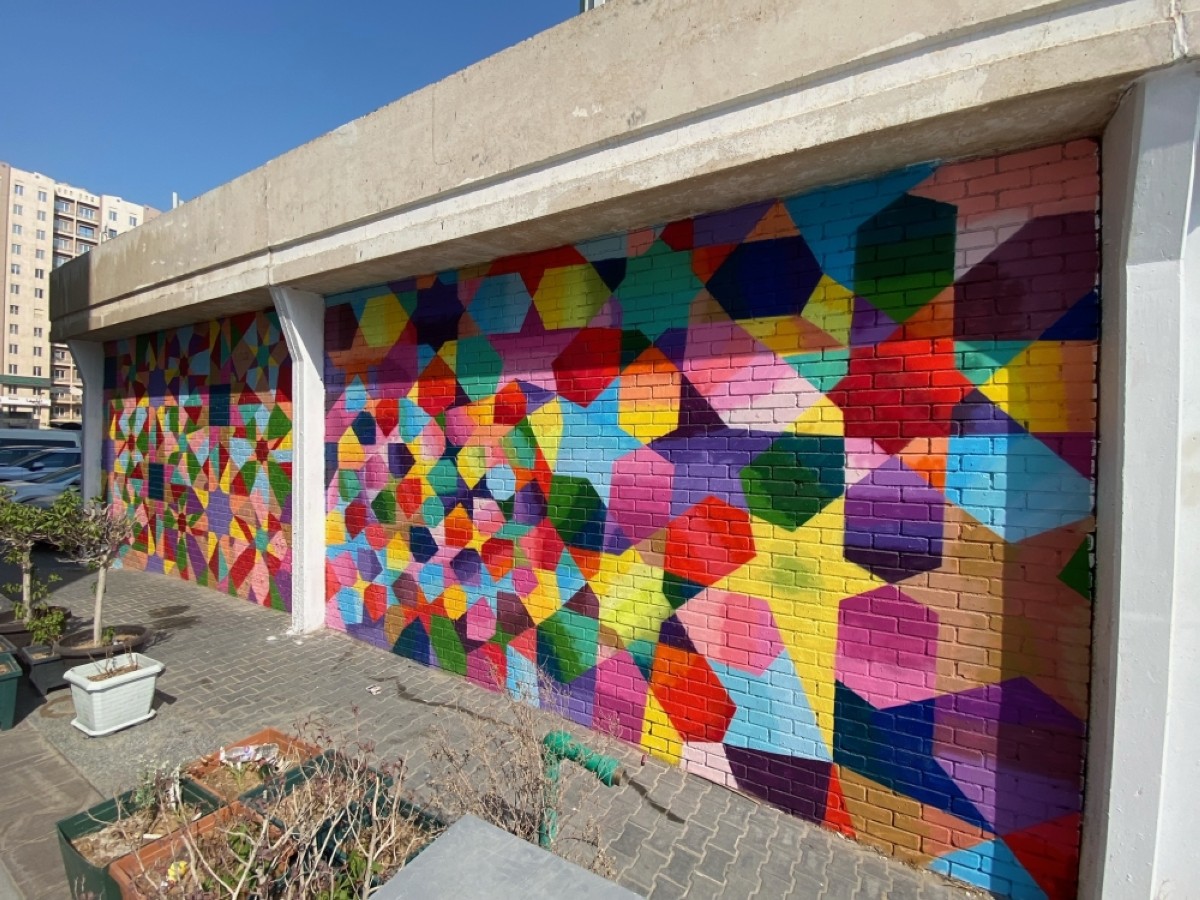American artist Clark Stoeckley has transformed Kuwait into a vibrant and colorful scene with his mural art, which can be seen throughout the country. As an artist and art professor at a university in Kuwait, Stoeckley has used his creative vision to infuse public spaces with dynamic and thought-provoking imagery.
Kuwait Times: When did you start painting murals?
Clark Stoeckley: I have been painting murals for 20 years across the United States. I began painting murals to engage with a wider audience rather than just art lovers.
KT: What inspired you to create murals in Kuwait?
Stoeckley: I have always wanted to paint a mural in Kuwait, but I was never sure who to contact for permission. In January, NCCAL posted a call for mural artists, and I immediately applied.






KT: Can you describe the main themes and messages you wanted to convey through your artworks?
Stoeckley: This body of work represents many things combined and nothing at all. I visualize the music, mutations of a spreading virus or the jolting culture shock of being at Burning Man one week and Kuwait the next. My tenth-floor apartment in Kuwait is just meters from the minaret of a neighboring mosque. At first, the five daily azans rattled me as they overlapped one another to create sonic collisions. Over time, I came to appreciate the layered discord from these reminders of gratitude and humility.
Distraught by violence and vitriol on the news and social media, I desired an escape from political arguments and superficial platitudes - particularly those following mass shootings. I sought to save my psychological and spiritual well-being through meditational drawing and hopefully transmit feelings of joy and bliss to others. I aim to discover euphoric harmony from chaotic asymmetry, rhythmic disruptions and disparate influences. I blend and distort imagery inspired by an amalgamation of motifs such as stained glass, psychedelia, science, street art and Islamic geometry. These synesthesia-stimulated drawings depict the kaleidoscopic phantasmagoria of my semi-lucid subconscious and divine introspective explorations. Or, simply put, they originate from doodles I make when I’m in a meeting.
KT: Have you faced any challenges painting around Kuwait?
Stoeckley: The heat was my only challenge. I painted at night to stay cool.
KT: How long did it take you to complete the projects?
Stoeckley: The first substation took two weeks to paint, and the second substation took six weeks to paint. Getting permission took about a month beforehand.
KT: What role do you think public art plays in the community in Kuwait?
Stoeckley: Public art not only beautifies the neighborhood, but it also makes people take pride in their environment. It increases morale and sparks creativity. We are constantly bombarded with images intended to sell us something by making us feel inadequate. Public art is the antithesis of propaganda and advertising. It cuts through the visual pollution to give our eyes and minds a break.
KT: Can you share an interesting story you had while working on the mural?
Stoeckley: Everyone who has stopped by has been very supportive, often bringing me water and complimenting me. A young Indian girl told me the murals are "drip” which I have now learned the kids are using to describe something very cool, awesome or stylish.
KT: How do you see the future of mural art evolving in Kuwait and the broader region?
Stoeckley: Hopefully Kuwait continues to inspire and support more mural art projects. There is so much public space that could be elevated in prestige just with a little paint.
KT: What feedback have you received from the local community?
Stoeckley: The feedback has been extremely positive. Many artists have asked how they can paint, and some business owners have contacted me about painting murals for them.
KT: Do you have plans for future projects in Kuwait or elsewhere that you can share with us?
Stoeckley: I plan to paint the wall around the AUK parking in the summer.

